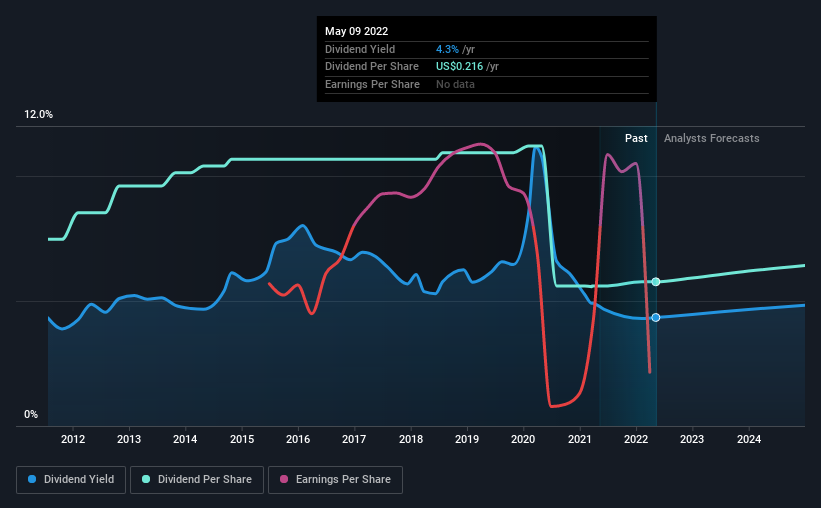Do These 3 Checks Before Buying BP p.l.c. (LON:BP.) For Its Upcoming Dividend
Readers hoping to buy BP p.l.c. (LON:BP.) for its dividend will need to make their move shortly, as the stock is about to trade ex-dividend. Typically, the ex-dividend date is one business day before the record date which is the date on which a company determines the shareholders eligible to receive a dividend. It is important to be aware of the ex-dividend date because any trade on the stock needs to have been settled on or before the record date. Meaning, you will need to purchase BP's shares before the 12th of May to receive the dividend, which will be paid on the 24th of June.
The company's next dividend payment will be US$0.055 per share, and in the last 12 months, the company paid a total of US$0.22 per share. Last year's total dividend payments show that BP has a trailing yield of 4.3% on the current share price of £4.048. We love seeing companies pay a dividend, but it's also important to be sure that laying the golden eggs isn't going to kill our golden goose! We need to see whether the dividend is covered by earnings and if it's growing.
See our latest analysis for BP
If a company pays out more in dividends than it earned, then the dividend might become unsustainable - hardly an ideal situation. BP paid a dividend last year despite being unprofitable. This might be a one-off event, but it's not a sustainable state of affairs in the long run. With the recent loss, it's important to check if the business generated enough cash to pay its dividend. If cash earnings don't cover the dividend, the company would have to pay dividends out of cash in the bank, or by borrowing money, neither of which is long-term sustainable. Thankfully its dividend payments took up just 28% of the free cash flow it generated, which is a comfortable payout ratio.
Click here to see the company's payout ratio, plus analyst estimates of its future dividends.
Have Earnings And Dividends Been Growing?
Businesses with shrinking earnings are tricky from a dividend perspective. If earnings fall far enough, the company could be forced to cut its dividend. BP was unprofitable last year and, unfortunately, the general trend suggests its earnings have been in decline over the last five years, making us wonder if the dividend is sustainable at all.
The main way most investors will assess a company's dividend prospects is by checking the historical rate of dividend growth. BP has seen its dividend decline 2.5% per annum on average over the past 10 years, which is not great to see. It's never nice to see earnings and dividends falling, but at least management has cut the dividend rather than potentially risk the company's health in an attempt to maintain it.
Get our latest analysis on BP's balance sheet health here.
To Sum It Up
Should investors buy BP for the upcoming dividend? It's hard to get used to BP paying a dividend despite reporting a loss over the past year. At least the dividend was covered by free cash flow, however. With the way things are shaping up from a dividend perspective, we'd be inclined to steer clear of BP.
So if you're still interested in BP despite it's poor dividend qualities, you should be well informed on some of the risks facing this stock. Every company has risks, and we've spotted 1 warning sign for BP you should know about.
Generally, we wouldn't recommend just buying the first dividend stock you see. Here's a curated list of interesting stocks that are strong dividend payers.
Have feedback on this article? Concerned about the content? Get in touch with us directly. Alternatively, email editorial-team (at) simplywallst.com.
This article by Simply Wall St is general in nature. We provide commentary based on historical data and analyst forecasts only using an unbiased methodology and our articles are not intended to be financial advice. It does not constitute a recommendation to buy or sell any stock, and does not take account of your objectives, or your financial situation. We aim to bring you long-term focused analysis driven by fundamental data. Note that our analysis may not factor in the latest price-sensitive company announcements or qualitative material. Simply Wall St has no position in any stocks mentioned.

